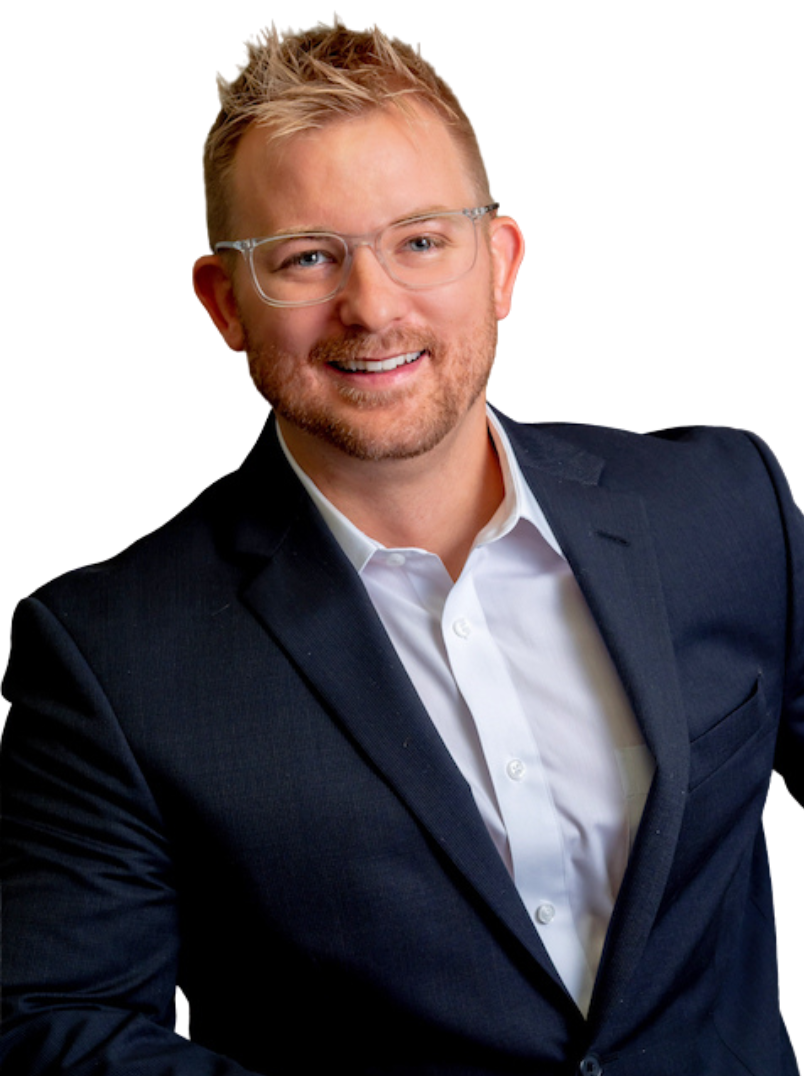Common Business Insurance Policies
By: Matt Larsen
Owner of Capstone Insurance Group & Restaurant Insurance Advisor
763-242-1668
Index
Contact Us
Investing in fix-and-flip properties in Minnesota has become increasingly complex in recent years, especially when it comes to securing the right insurance coverage. With
home insurance premiums rising sharply and
construction labor becoming scarce, understanding how these factors interplay is essential for investors aiming to protect their assets and maximize returns. This comprehensive guide dives into the current insurance landscape for fix-and-flip projects in Minnesota, the challenges posed by rising costs and labor shortages, and practical tips for navigating these hurdles effectively.
The Rising Cost of Home Insurance in Minnesota
Home insurance premiums in Minnesota have surged dramatically over the past few years. Since 2018, rates have increased by nearly 40%, pushing the average premium above $1,600 annually. This steep rise is not just a reflection of inflation but is driven by several underlying factors that uniquely impact the state’s housing market.
One of the most significant contributors to this spike is the increased frequency and severity of weather events. For example, a hailstorm lasting just 30 minutes in the Twin Cities metro area last August caused approximately a billion dollars in damage, according to Julia Drier, deputy commissioner at the Minnesota Department of Commerce. Such catastrophic events have led insurers to reassess risk and adjust premiums accordingly, making insurance more expensive for homeowners and investors alike.
Moreover, rising construction costs have compounded the problem. As building materials and labor prices climb, insurance companies factor these higher replacement costs into their policies, further driving up premiums. This combination of severe weather and construction inflation has created a challenging environment for fix-and-flip investors who rely on affordable insurance to safeguard their projects.
In addition to these factors, the increasing prevalence of natural disasters has prompted many insurance companies to reevaluate their coverage options. For instance, some insurers are now offering limited coverage or even withdrawing from certain high-risk areas altogether, leaving homeowners with fewer choices and potentially higher costs. This has created a ripple effect in the market, as homeowners scramble to find policies that not only offer comprehensive coverage but also fit within their budgets. The uncertainty surrounding climate change and its impact on future weather patterns only adds to the anxiety felt by both homeowners and insurers alike.
Furthermore, the demographic shifts in Minnesota are also playing a role in the rising insurance costs. As more people move to urban areas, the demand for housing increases, which in turn drives up property values. Higher property values mean that the cost to insure these homes also rises, as insurers must account for the greater financial risk associated with more expensive properties. This trend is particularly noticeable in neighborhoods that have seen significant revitalization, where the influx of new residents and businesses has transformed the local economy but also made insurance premiums soar.
For more detailed insights on the soaring cost of homeownership in Minnesota, visit mnrealtor.com.

How Insurance Premiums Impact Fix-And-Flip Projects
For fix-and-flip investors, insurance is not just a regulatory requirement but a critical component of risk management. However, the recent 15% surge in home insurance premiums in Minnesota has made it increasingly difficult to maintain profitable margins. This increase is largely attributed to the rising costs of construction and the heightened risk from severe weather conditions.
Higher insurance premiums mean that investors must allocate more capital to cover these expenses, which can reduce the funds available for renovations or limit the scope of improvements. Additionally, some investors are forced to accept policies with large deductibles or less comprehensive coverage, exposing themselves to greater financial risk if damage occurs during the renovation process.
These challenges are reflected in broader housing market trends. A survey by the Federal Reserve Bank of Minneapolis found that rising insurance costs are putting significant stress on multifamily housing owners, many of whom are adjusting their policies in ways that may not fully protect their investments. This trend is likely mirrored in the fix-and-flip sector, where tight budgets and quick turnarounds leave little room for unexpected expenses.
Moreover, the implications of increased insurance premiums extend beyond immediate financial constraints. Investors may find themselves re-evaluating their project timelines, as longer renovation periods can lead to higher costs and increased exposure to market fluctuations. The pressure to complete projects quickly can lead to rushed decisions, which may compromise the quality of work and ultimately affect resale value. Additionally, with the competitive nature of the fix-and-flip market, investors might feel compelled to cut corners on necessary renovations or forgo certain upgrades that could enhance property appeal.
As the insurance landscape continues to evolve, savvy investors are exploring alternative strategies to mitigate these rising costs. Some are turning to specialized insurance providers that cater specifically to the needs of real estate investors, offering tailored policies that can provide better coverage at more competitive rates. Others are investing in risk management practices, such as improving property resilience against weather-related damage, which could potentially lead to lower premiums over time. Understanding these dynamics is essential for investors looking to navigate the complexities of the current market effectively.
To understand more about the recent insurance premium increases and their causes, see the report at
insuranceroyals.com.
Labor Shortages and Their Effect on Insurance and Project Timelines
Another critical factor influencing fix-and-flip insurance and project success in Minnesota is the ongoing labor shortage in the construction sector. A state workforce report projects a 15% decrease in carpenters and electricians by 2026, a trend that is already causing delays and driving up project costs. This shortage is not merely a local issue; it reflects broader national trends where many skilled tradespeople are retiring without enough new workers to replace them. As a result, the construction industry is grappling with an aging workforce, and the influx of younger workers into these trades has not kept pace with demand. This demographic shift poses significant challenges for the timely completion of renovation projects.
Labor scarcity affects insurance indirectly by prolonging project timelines. When renovations take longer than anticipated, insurance coverage periods extend, potentially increasing premiums or claims exposure. Arvind Mohan, CEO of Kiavi, highlights this issue by noting, "When transactions take longer, capital remains tied up, limiting investors’ ability to reinvest in new opportunities." This bottleneck can dampen overall market activity and profitability for fix-and-flip investors. Furthermore, the unpredictability of project timelines can deter potential investors, who may perceive the market as unstable or fraught with risk, thereby exacerbating the labor shortage as fewer projects are initiated.
Additionally, about one-third of fix-and-flip investors have reported reduced labor availability due to factors such as immigration enforcement and worker absenteeism. These constraints not only slow down construction but can also lead to increased costs, which may be reflected in higher insurance premiums or claims. Moreover, the rise in material costs, often linked to supply chain disruptions, compounds these issues. Investors may find themselves in a precarious position where they are forced to choose between cutting corners on quality or absorbing higher costs, both of which can have long-term implications for their projects and reputations.
For a deeper dive into labor challenges faced by fix-and-flip investors, visit
nextmsc.com. The site provides insights into how these labor shortages are reshaping the landscape of real estate investment and the strategies that investors can employ to navigate these turbulent waters. Understanding the nuances of labor availability and its impact on project execution is crucial for anyone looking to thrive in the fix-and-flip market.
Strategies for Managing Insurance Costs in Fix-And-Flip Ventures
Given the rising insurance premiums and labor challenges, fix-and-flip investors in Minnesota need to adopt proactive strategies to manage costs and mitigate risks effectively. One approach is to work closely with insurance agents who specialize in investment properties to tailor coverage that balances protection and affordability.
Investors should also consider increasing deductibles to lower premium costs, but this must be weighed against the potential out-of-pocket expenses in the event of a claim. Another tactic is to invest in risk mitigation measures such as enhanced security systems, weatherproofing, and regular property maintenance to reduce the likelihood of damage and claims.
Furthermore, building strong relationships with reliable contractors and subcontractors can help minimize delays and control construction costs, indirectly influencing insurance expenses. Staying informed about local market conditions, including labor availability and material costs, will enable investors to plan more accurately and avoid unexpected financial burdens.
Additionally, investors might explore bundling insurance policies, which can often lead to significant savings. By consolidating various types of coverage—such as liability, property, and workers' compensation—into a single policy with one provider, investors can not only reduce costs but also simplify their insurance management. Moreover, some insurance companies offer discounts for properties that meet certain safety standards or for investors who have completed risk management training programs, providing further opportunities to lower expenses.
Networking with other real estate investors can also yield valuable insights into effective insurance strategies. Joining local real estate investment groups or online forums can facilitate the exchange of experiences and recommendations on insurance providers, coverage options, and risk management practices. Sharing knowledge about successful strategies can empower investors to make informed decisions that enhance their bottom line while navigating the complexities of the fix-and-flip market.
For insights on how rising
property insurance costs are stressing housing markets and ways to adapt, see the analysis by the Federal Reserve Bank of Minneapolis at
minneapolisfed.org.

Looking Ahead: The Future of Fix-And-Flip Insurance in Minnesota
The outlook for fix-and-flip insurance in Minnesota suggests continued challenges but also opportunities for savvy investors. As climate-related risks grow and construction costs remain high, insurance companies are likely to maintain elevated premiums. However, technological advancements and evolving underwriting models may offer more customized and cost-effective solutions in the future.
Investors should keep abreast of regulatory changes and market trends, including potential shifts in labor force dynamics and insurance industry responses to weather-related damages. By staying informed and adaptable, fix-and-flip professionals can better navigate the complexities of insurance and protect their investments in this dynamic environment.
Despite the hurdles, the Minnesota real estate market continues to attract interest, and with careful planning, insurance challenges can be managed to support successful fix-and-flip projects.
Moreover, the rise of data analytics and artificial intelligence in the insurance sector is poised to revolutionize how policies are underwritten and priced. These technologies can analyze vast amounts of data to assess risk more accurately, which may lead to more competitive rates for investors who demonstrate a strong understanding of their properties and markets. As these tools become more accessible, they could empower investors to make more informed decisions, potentially lowering costs and enhancing profitability.
Additionally, the growing emphasis on sustainable building practices may influence the insurance landscape. Properties that incorporate energy-efficient features or sustainable materials could qualify for lower premiums, reflecting the reduced risk associated with environmentally friendly renovations. This trend not only aligns with broader societal goals of sustainability but also offers a unique selling proposition for investors looking to differentiate their projects in a crowded market. By embracing these innovative approaches, fix-and-flip investors can not only navigate the complexities of insurance but also contribute positively to the community and environment.
For current market trends related to fix-and-flip investments, including recent contractions and sales performance, check out the report from John Burns Research and Consulting and Kiavi at
cnbc.com.






